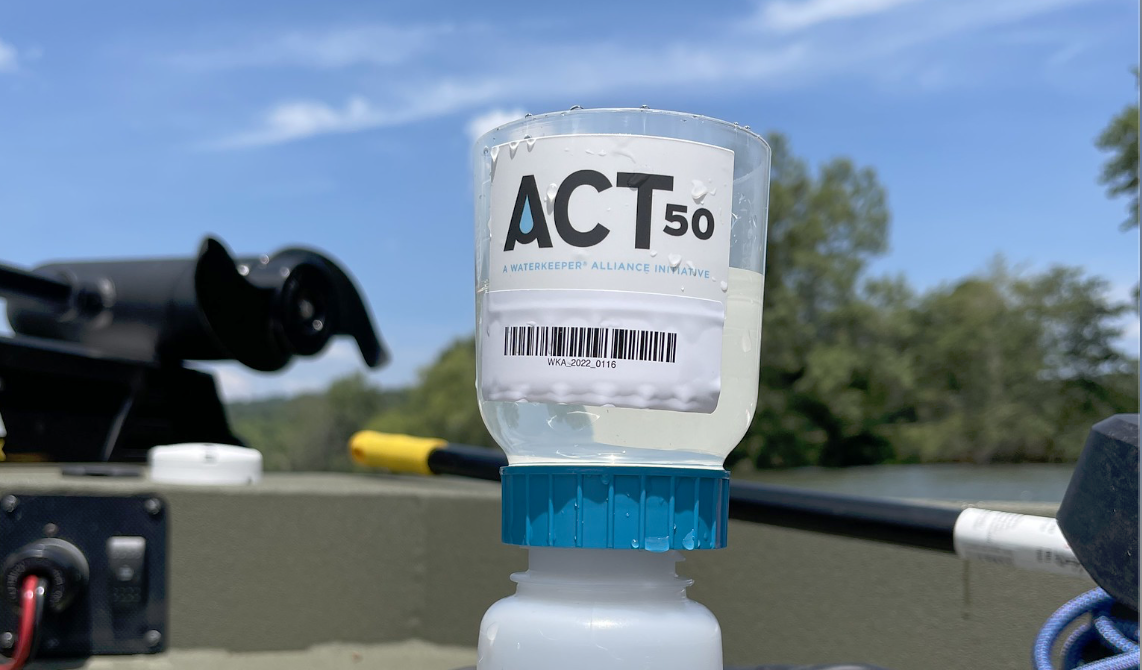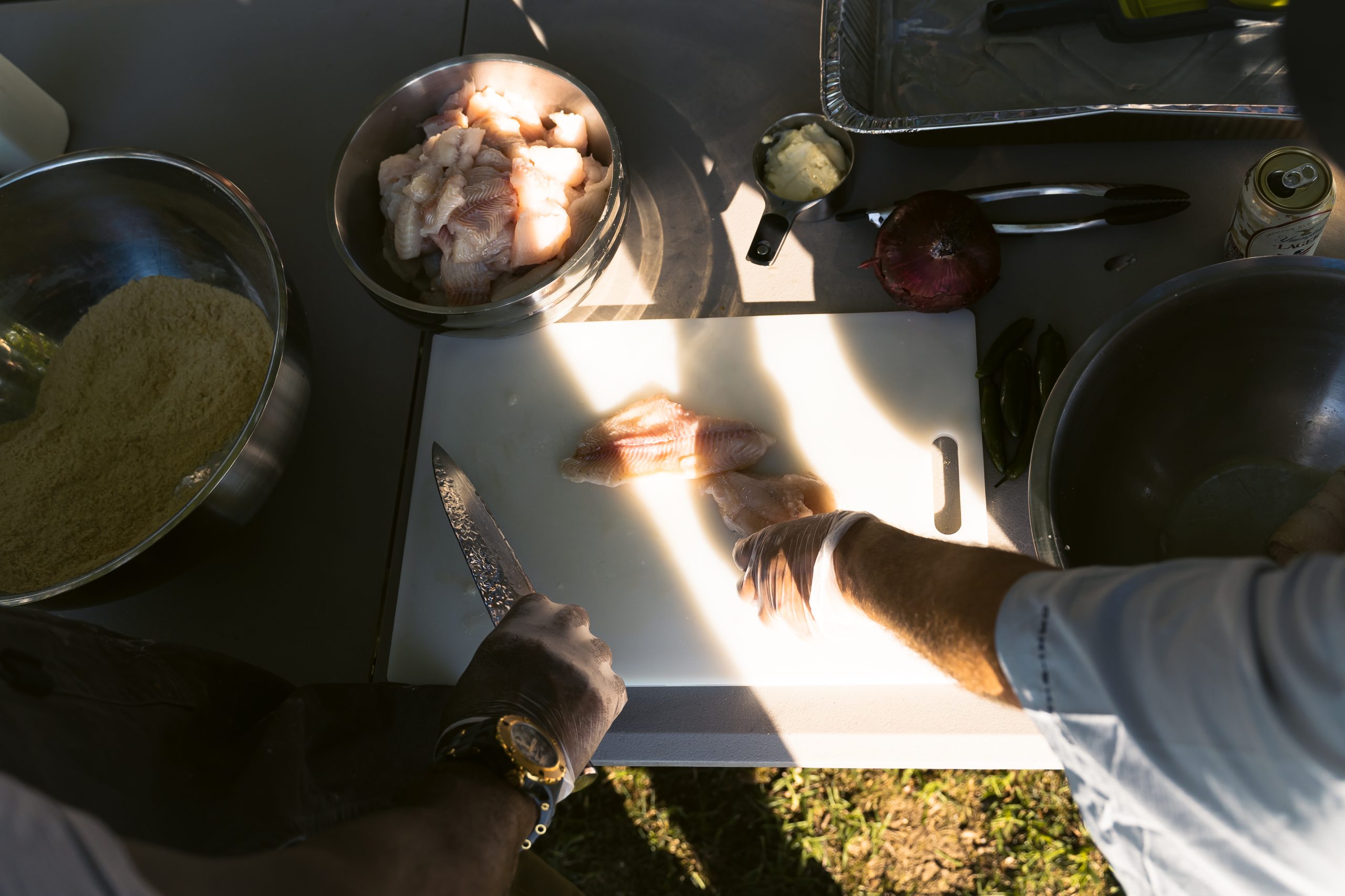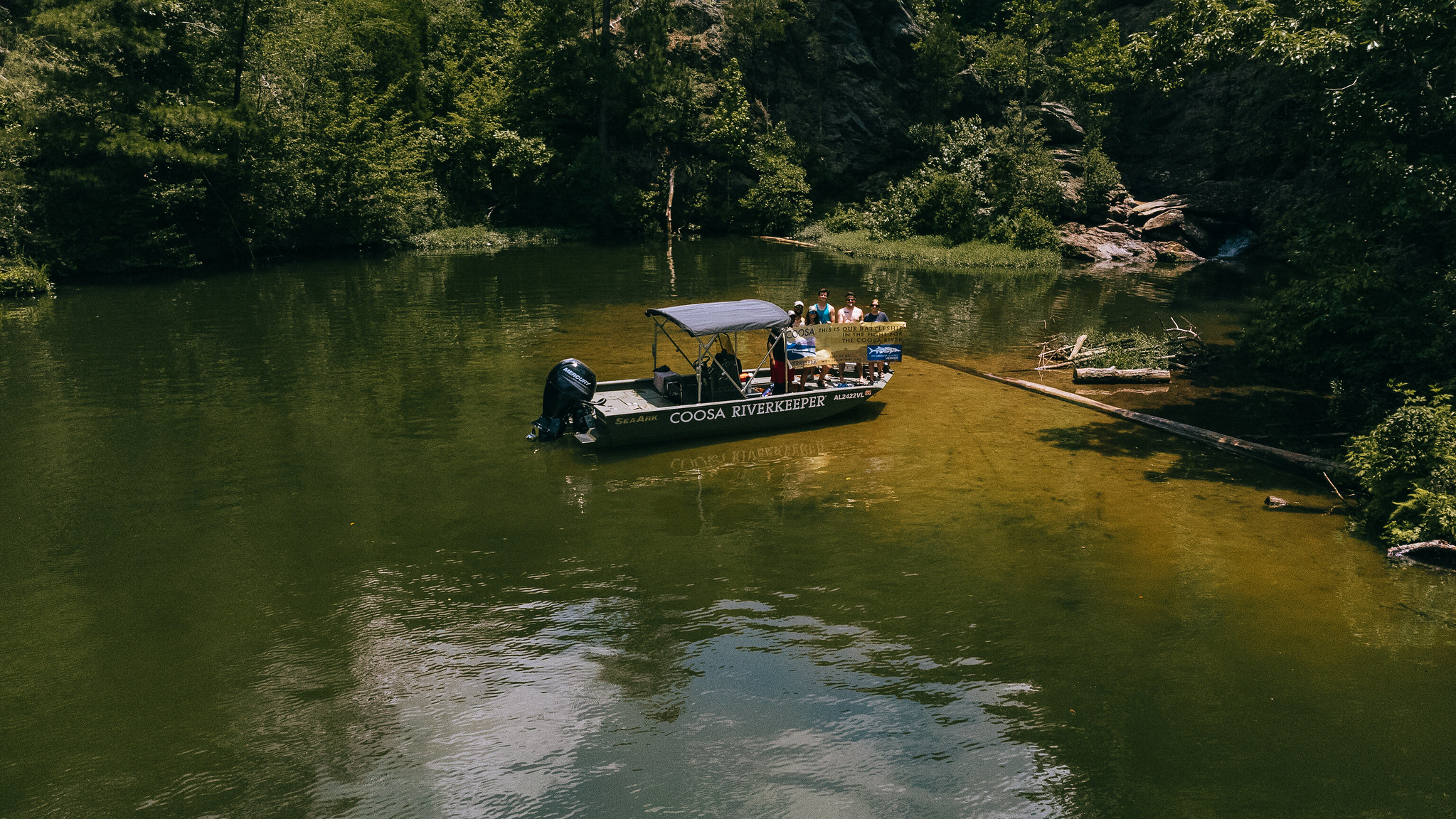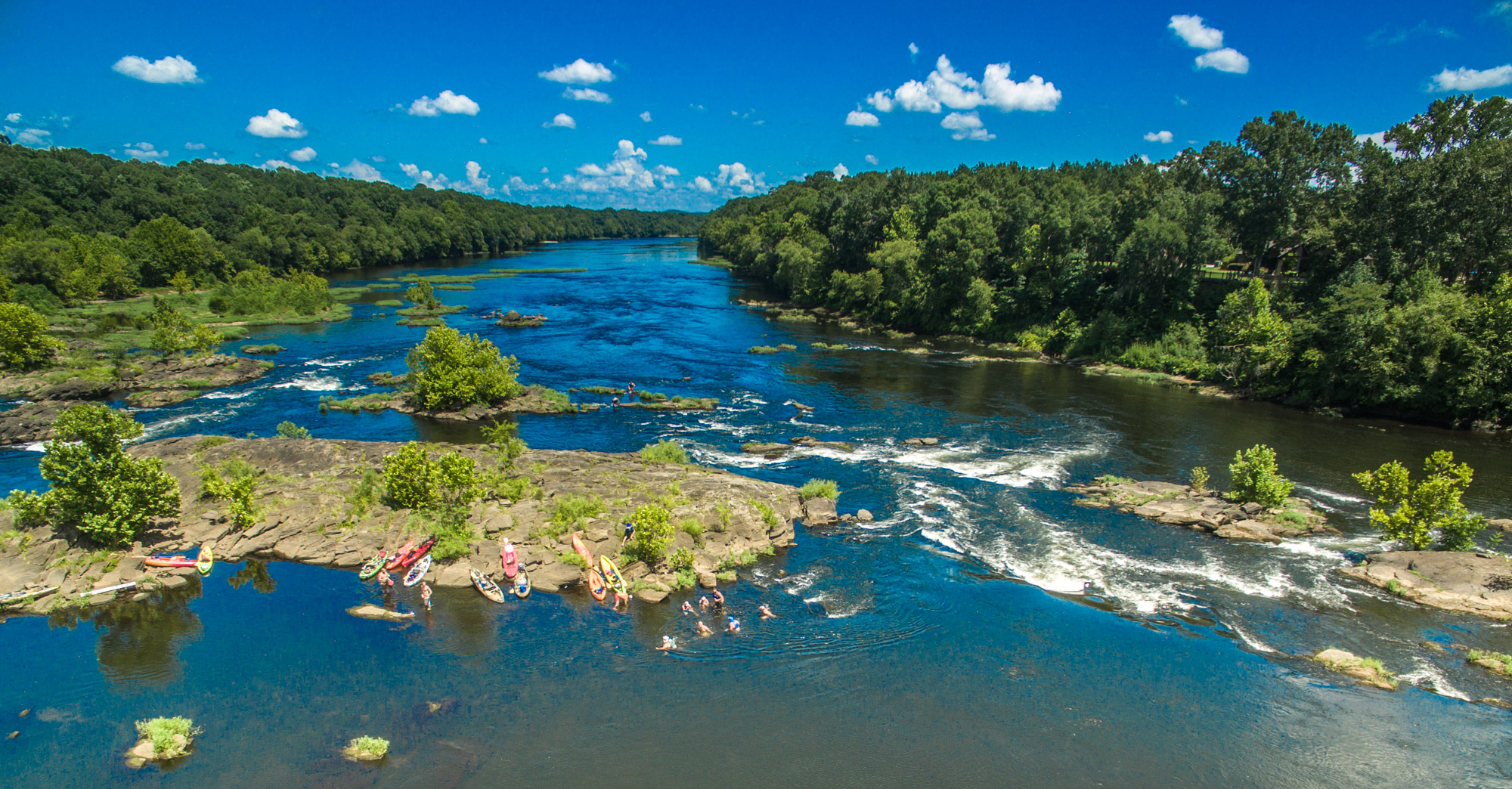Catfish
Bass
Bream
Crappie
Channel Catfish
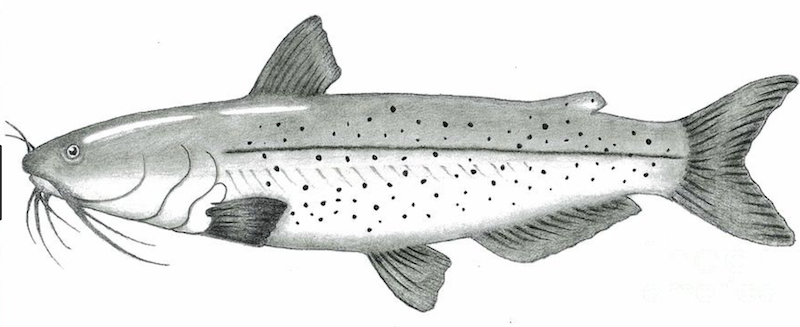
(Ictalurus punctatus
The channel catfish (Ictalurus punctatus) is the most commonly caught and eaten catfish in the Coosa River.
Distinguishing Features
A few features distinguish channel catfish:
- Adult size is 15-24 inches.
- Coloring is brown and grey back with small dark spots along its body and a light belly.
- Like the blue catfish, its tail is forked.
- Unlike the blue cat, its anal fin is curved and not straight.
Habitat
Channel catfish like the lake life, but are also at home in larger rivers and ponds. They prefer slow to moderate moving currents over sand, gravel, and silt.
Diet
Channel catfish have a strong sense of smell and taste, but it doesn’t bother them too much – they’ll eat just about anything! They enjoy aquatic insects, crawfish, and other small fish along with baits like cheese, chicken, dough balls, redworms, and cut bait.
Spawn
Channel catfish spawn occurs in May and continues throughout the summer until August. They spawn anywhere from 70-84 degrees F, but 80-81 degrees F is considered best.
Advisories
Weiss Lake: Limit consumption of catfish to 1 meal/month due to PCBs.
Logan Martin: Limit consumption of catfish to 1 meal/month due to PCBs.
Lay Lake: Limit consumption of catfish to 1 meal/month due to PCBs.
Choccolocco Creek: It is advised to NOT eat any fish caught from Choccolocco Creek due to PCBs & mercury.

(Ictalurus punctatus)
The Coosa River’s channel catfish (Ictalurus punctatus) are the most commonly caught and eaten catfish! When trying to land one, be sure to use a tasty, smelly bait. They are known for their amazing tasting ability and can smell with their entire body. The state record channel catfish was 40 lbs, caught on 6/17/1967 at Inland Lake.
The Blue Catfish

(Ictalurus furcatus)
The blue catfish (Ictalurus furcatus) is similar to the channel cat, but can grow larger. Like most catfish, they are opportunistic predators that will consume most anything they can get their mouth around. The state record blue catfish was 120 lbs 4 oz, caught on 3/9/2012 on Holt Reservoir.
The Blue Catfish
Distinguishing Features
A few features distinguish the blue catfish:
- Adult size is 18-24 inches.
- Coloring is a pale blue to gray body.
- Their anal fin is straight, not curved, and if you really feel like counting, has 30+ rays compared to the channel cat which has less than 30 rays.
- Their tail is forked like a channel cat, but usually more deeply.
Habitat
Blue catfish like large waterbodies, even better if they are clear with moving water. They tend to congregate in the tailwaters below dams and around submerged treetops.
Diet
They love to feed below the dams on the Coosa’s and scoop up whatever smells good that day. They will feed on both living and dead fish and aquatic organisms.
Spawn
All of the major catfish species spawn during spring or summer when the water warms to an optimal temperature. Blue catfish spawn at 70 to 84 degrees, but 80 to 81 degrees is considered best.
Advisories
Weiss Lake: Limit consumption of catfish to 1 meal/month due to PCBs.
Logan Martin: Limit consumption of catfish to 1 meal/month due to PCBs.
Lay Lake: Limit consumption of catfish to 1 meal/month due to PCBs.
Choccolocco Creek: It is advised to NOT eat any fish caught from Choccolocco Creek due to PCB & mercury.
Flathead Catfish

(Pylodictis olivaris)
The flathead catfish (Pylodictis olivaris) is quite distinct from a blue or channel cat. They live their life generally in the same types of places and feeding on the same things as blues and channel cats.Distinguishing Features
A few features distinguish the flathead catfish:
- Adult size is 18-24 inches.
- Coloring is a mess of browns, yellows, blacks and whites – very mottled.
- Recurved tooth patches on either side of the upper jaw.
- Their head is, not surprisingly, quite flat – it almost looks like the backside of a shovel!
- Their anal fin is short like a channel cat and rounded.
- Their tail is not forked like blue and channel cats.
Habitat
Flathead catfish like large waterbodies, even better if they are clear with moving water. They like flowing water over sand, gravel, and mud, but flathead catfish love hanging out around fallen trees, stumps, rock ledges, and riprap.
Diet
Just like other catfish species, flathead catfish are opportunitistic predators that will eat anything they can get – alive or dead! They like insects, crawfish, and small fish.
Spawn
Flatheads spawn over excavated pits during June and July. The young flatheads tend to school, but they soon separate to be solitary for the rest of their lives.
Advisories
Weiss Lake: Limit consumption of catfish to 1 meal/month due to PCBs.
Logan Martin: Limit consumption of catfish to 1 meal/month due to PCBs.
Lay Lake: Limit consumption of catfish to 1 meal/month due to PCBs.
Choccolocco Creek: It is advised to NOT eat any fish caught from Choccolocco Creek due to PCB & mercury.

(Pylodictis olivaris)
The flathead catfish (Pylodictis olivaris) is quite distinct from a blue or channel cat. They live their life generally in the same types of places and feeding on the same things as blues and channel cats. The state record flathead catfish was 80 lbs, caught on 6/22/1986 on the Alabama River.



